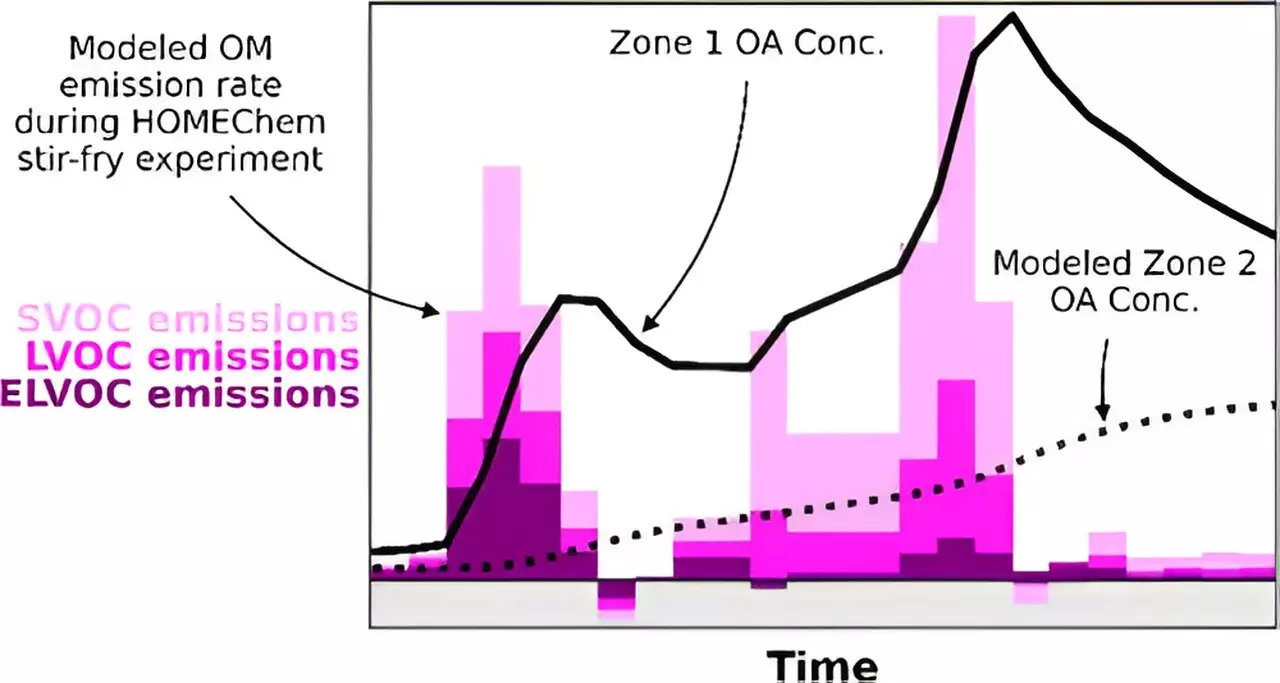Stir-frying has become a popular cooking method worldwide, known for its quick and easy preparation of meals. However, this cooking technique is not without its drawbacks. When stir-frying, tiny particles and gases are emitted into the air, leading to air pollution and potential health risks. Understanding and accurately estimating these cooking emissions is crucial for assessing exposure and developing health guidelines to protect individuals. In this article, we explore a new model developed by researchers, including a Johns Hopkins University air-quality expert, that aims to improve the estimation and prediction of particulate matter concentration during stir-frying.
Traditional methods of estimating cooking emissions have limitations when applied to real-world settings, such as homes and restaurants. The new model developed by the research team addresses these limitations by incorporating detailed particulate measurement data. By considering the dynamic changes in particle concentration and composition as emissions move from the cooking area to other indoor spaces, this model offers a more comprehensive understanding of potential exposure to cooking emissions.
Through detailed measurements, the research team identified two main types of emissions resulting from stir-frying vegetables in oil. The first type closely resembled cooking oil, containing organic materials like triglycerides, fatty acids, and proteins. The second type was similar to particles from burning wood, indicating the presence of partially burned sugars from the cooking of vegetables and stir-fry sauce. Additionally, some chemicals emitted during stir-frying exist as gases, while others can transition between gas and particle phases based on their volatility.
The Impact on Indoor Air Quality
The impact of cooking-related particulate matter on indoor air quality and human health is an area of ongoing research. While studies have shown that outdoor particulate matter can contribute to respiratory and cardiovascular illnesses, the specific effects of indoor particulate matter from cooking are still unclear. The development of this new model helps to fill this knowledge gap by providing more accurate estimates of pollution levels, airflow patterns, and particle concentrations in homes and buildings where individuals and families may be affected.
Dynamic Changes in Pollutant Composition
A significant insight from this research is the recognition of natural thermodynamics’ role in the composition and concentration of pollutants after cooking has ceased. Previous models assumed that emitted particles and gases remained static and lingered even after cooking stopped. However, the new model takes into account how particles and gases dissipate as air moves, leading to changes in their composition and concentration. This better characterizes how cooking emissions spread throughout indoor spaces and highlights the need for proper ventilation and air filtration to reduce exposure to these pollutants.
Implications for Public Health
The improved model not only provides valuable insights into potential exposure to cooking-related emissions at an individual level but also offers input data for assessing risks at a larger population level. By understanding pollution levels, airflow patterns, and particle concentrations in various settings, health guidelines and recommendations can be formulated to protect people from the adverse effects of cooking emissions. While ventilation of cooking emissions outdoors remains the best approach, other measures such as air filtration can also help reduce exposure inside homes and businesses.
The development of a new model for estimating and predicting cooking emissions during stir-frying is a significant advancement in understanding the impacts on indoor air quality and human health. By incorporating real-time measurement data and considering dynamic changes in pollutant composition, this model provides more accurate estimates of exposure and offers a basis for developing effective health guidelines. The research emphasizes the importance of proper ventilation and other mitigation measures to reduce individuals’ exposure to cooking emissions and improve indoor air quality.


Leave a Reply